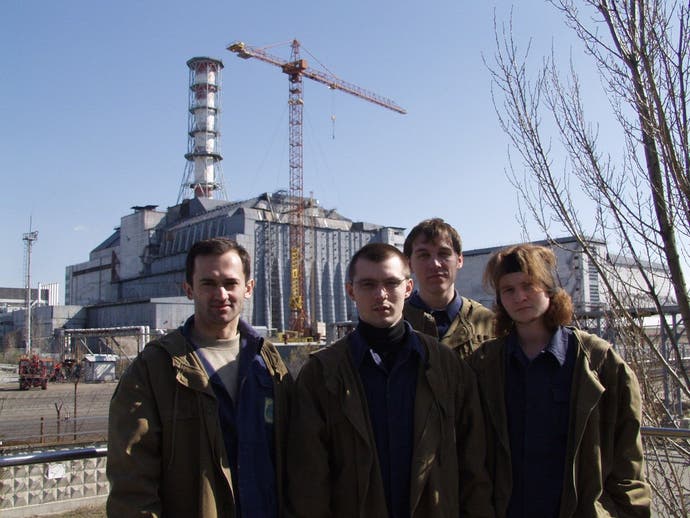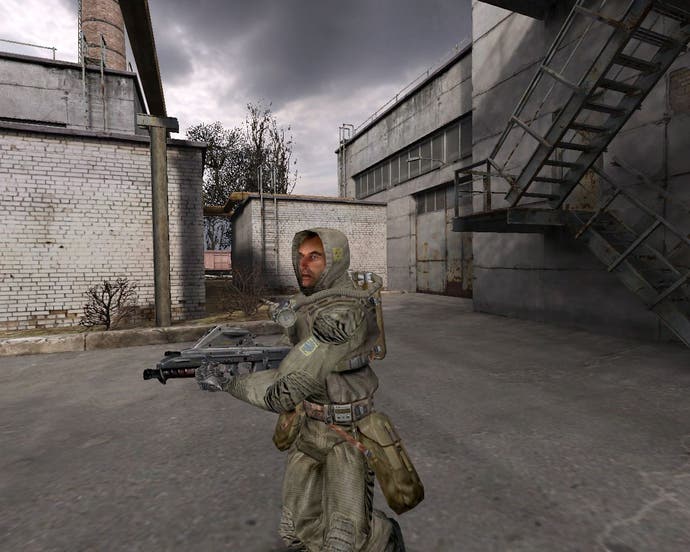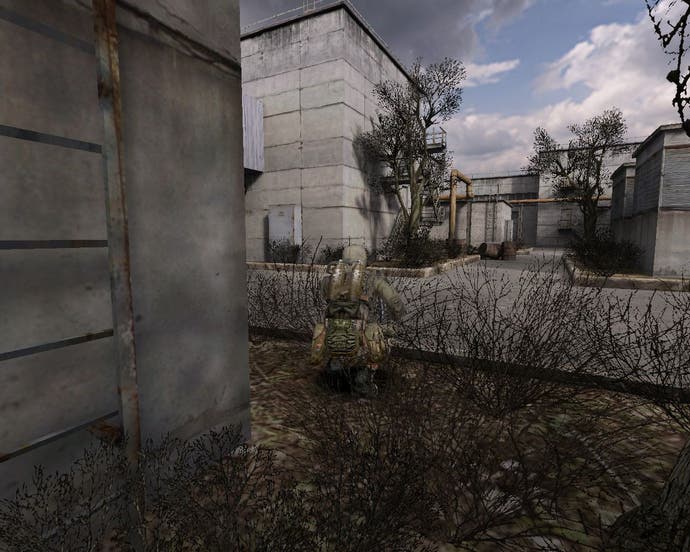Sergiy Grygorovych of GSC Gameworld
Interview - we talk to the designer behind Stalker, a stunning new first person shooter from the Ukraine
While Ukrainian developers GSC GameWorld are best known for their popular real-time strategy game Cossacks, all of that could be about to change. The company is currently working on an impressive looking first person shooter called Stalker : Oblivion Lost, which is due for release next summer and is already shaping up to blow the genre wide open. We caught up with designer Sergiy Grygorovych to find out more about the ambitious project...

Getting In The Zone
Stalker is set in and around Chernobyl, site of the world's worst ever nuclear accident. In the game a second disaster has turned the entire region into a forbidden zone of lethal radiation hotspots and mutated wildlife, but as a stalker you must make your living by exploring this zone and recovering strange artifacts from within it.
All of which might sound vaguely familiar to fans of Russian cinema, as it bears an uncanny resemblance to Andrei Tarkovsky's classic sci-fi film, also called Stalker. "Undeniably we were inspired by the movie Stalker when working out the plot of the game", Sergiy confirmed. "In fact, Stalker : Oblivion Lost is a fusion of the movie and two other things - The Roadside Picnic, a book by the Strugatsky brothers, and the history of the Chernobyl catastrophe. In relation to games, we drew inspiration from many action-adventure titles, from Half-Life to System Shock and Deus Ex."
Another major source of inspiration for the game came from some rather hazardous fieldwork, with a group including Sergiy taking a trip into the real evactuated zone surrounding Chernobyl. "Spending a day there in the Chernobyl area fills you with a touch of emptiness and fearful realization of how dreadful the accidents can be caused by mankind. Imagine a totally empty city that once housed 50,000 residents, 16 storey concrete buildings all in weeds, trees on the stadium, debris of contaminated villages in the vicinity, kilometers of wasted vehicles. It's a horrifying scene to observe. Visiting the Chernobyl zone once, you can't throw it out of your mind for a long time."

Heart Of Darkness
According to Sergiy, the visit has helped the design team to capture the atmosphere of Chernobyl, with the real-life stalkers coming home with hundreds of photographs and even some video footage from within the zone. Certainly the new screenshots we've seen since the visit have shown a quantum leap over the early artwork released last year.
"We're making a game about the Chernobyl exclusion zone, and naturally will try to most fully render the atmosphere and looks of the inner ten kilometer zone", Sergiy told us. "This means that along with creating prototypes of real constructions, vegetation and landscape, we will also use 'real' textures brought from there. The game will feature Red Forest, Prypjat city, Chernobyl city, the Chernobyl atomic facility and more. Chernobyl plant is the centre of the zone, and the game objective is not only to reach it, but also to get inside."
Doing so will be easier said than done. As in the movie, the zone is full of dangerous traps, not all of which are immediately obvious. "In the movie Stalker the psychological danger was balancing on the verge of physical, and could instantly destroy the fragile bodies of the characters. To our mind, psychological danger differs from physical only in that it doesn't disclose itself. That's why, similarly to the movie, psychological danger will be intertwined with physical in our game. Moreover, a real 'physiological' danger will be introduced with parapsychology skills - telepathy, control and telekinesis."

Chain Reaction
The zone isn't just a static setting for players to fight their way through either. GSC are aiming to build a living, breathing world for players to explore, and in a way the Zone is as much a character in the game as the creatures and stalkers that inhabit it.
"We have been developing an original system [which] will fill levels with game characters based on several factors - living conditions, flora and fauna aggressiveness, game plot impact and interaction with other characters and creatures", Sergiy explained. "Apart from that, at certain times psycho-energetic outbreaks from the Zone hub will occur. During these outbreaks all the living creatures outdoors try to find a hiding place, and after such a blowout new artefacts get generated. Thus the Zone world changes and renews constantly, enabling you to find a place to hunt, get artefacts or carry out quests."
"There will be about 100-300 other stalkers in the zone apart from the player, with a life simulation system in charge of their behaviour and movement. The game will provide the possibility of extensive communication between the player and zone inhabitants / stalkers. Depending on the general mood of this communication, as well as the player's actions, the corresponding groups of creatures will build their behaviour accordingly."

Free Trade
All of this should lead to a more free-form style of gameplay than in most first person shooters, allowing players to progress through the storyline at their own pace. "We rejected the linear passing from level to level in favour of freedom of action and movement, as seen in Elite, Daggerfall and Fallout, where players travelled over a huge game territory, exploring it, gaining money and experience."
An important part of this is a trade system which will allow players to cash in artifacts and spare equipment in exchange for fresh suppies. "Trade will be maximally realistic; weapons, ammunition, vehicles, equipment, artifacts - everything can be exchanged and sold. You can trade with the army, traders, stalkers and scientists. [For example], if a player comes across a veteran stalker in the Zone they can greet each other, agree to put down weapons, then approach each other and start trading."
Perhaps most exciting of all, this same approach will carry over into the multiplayer game. "Stalker will enable co-operative playing, where several players join in a game and roam the Zone together, collecting artifacts and smashing monsters. Multiplayer will also provide all the standard modes, such as deathmatch and CTF. Apart from these modes, we plan several new ones, like the one called Hunt. Here players select a map, purchase weapons and go for it. Players obtain money at the game start and for each kill of an enemy. When killed, the player again purchases weapons (with the combat-gained money) and starts fighting."
Conclusion
With innovative gameplay and a novel setting, not to mention some gorgeous graphics powered by GSC's in-house X-Ray engine, Stalker is one of the most interesting first person shooters on the horizon at the moment. The first playable build of the game should be on show at E3 in Los Angeles next week, so if you're going to be there you owe it to yourself to go and see the game.







